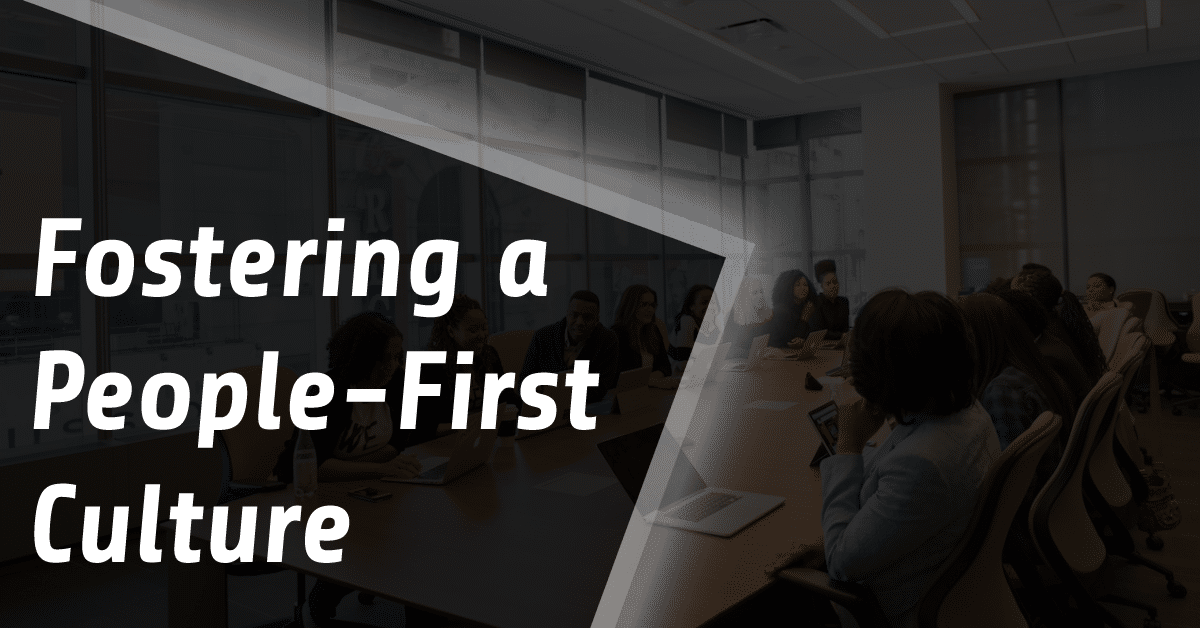
It was a quick tweet, but made me think:
What are the most important parts of a people-first culture?
Fostering a people-first culture isn’t only about what TO DO but what NOT TO DO.
This isn’t a definitive list but a few thoughts, observations and anecdotes.
Open Communication
Open communication runs in all directions within the organization.
In my opinion, this covers two main areas:
- No surprises
- Just reply
Of course there are more but these are two of the most important elements of open communication.
First, when it comes to any career or profession, no one likes surprises. If something is going on behind the scenes, it’s better to be honest and straightforward instead of holding back or obfuscating a situation. It’s not acceptable to announce there won’t be raises the coming year in early January. It’s equally unacceptable (and very tough on morale) to cancel bonus payments 2 weeks after they were scheduled to be paid out. There may be tough times, and these situations are never easy but don’t surprise your team with bad news at the last minute.
Second, just reply to emails. Don’t let things sit forever. As a manager, if you have too many emails then hire an EA or VA to go through and flag your inbox.
In any case, don’t let emails sit in your inbox unanswered for days and weeks. Even if the reply is only, “I’ll get to this in a couple days, stay tuned…” That’s fine! It’s much better than ghosting.
This fosters a people-first culture from the top down and that’s very important for cohesive company culture throughout the organization.
Respect for Work/Life Balance
Everyone in the organization should respect each other’s boundaries. This is especially important when it comes to forcing or expecting extra work.
Sure, sometimes there may be a late night or two to hit a deadline but that doesn’t mean every week should have an expectation of 50-70+ hours without proper (additional) compensation.
If someone is hired for a job, that’s the job. Don’t move the mark or change goals; don’t demand overwhelming performance.
Loyalty goes goth ways.
Frequent & Timely Recognition
Make sure that everyone in the company knows if they are doing well.
Praise often goes further than cash. A proper feedback loop is invaluable.
Reward team-wide and individual wins, note and correct failures throughout the org.
This can be done in a company chat channel or in 1-1 meetings.
To further hone this skill, the book, the 1 Minute Manager has some great notes about recognition that are worth studying.
Shared Core Values / First Principles
Building your team with common core values is an important way to start your people-first journey. The team being built should share this value so as the company grows, it’s not lost at scale.
This will help drastically with team cohesion.
Creating a list of interview questions that help understand if the interviewee has value alignment can help too.
It’s typically 10x worse if end up hiring someone who is a perfect fit for the job but they are a bad team fit.
Empathy
Empathy is basically the culmination of everything else. Treating people with empathy and actually like people is the most important part of this “people-first” equation.
Whether it’s a new HR policy or what snacks to buy for the office, there should be some care put into the people involved.
Sometimes, the data driven world of business can lose a bit of humanity. It all ends up being about dollars and cents. On paper, there may be a series of decisions that appear to be solid since they were made with a shrewd, numerical, capitalistic mindset. However, in practice these decisions are consumed and interpreted as lacking any sense of humanity. The affected staff may feel slighted, frustrated and devalued. It’s not hard to avoid though; just have some empathy about the situation. How will this messaging be received? With angst and vitriol or a common understanding? Am I throwing someone under the bus or making someone’s life harder for no reason, just for the sake of an asinine policy? Am I being confusing in the delivery of a strategy or direction?
Why not put an empathy filter on these types of decisions instead?
TL;DR
Overall, there’s no secret to fostering a people-first culture other than putting people first.
As a manager or business owner, you can strive to hire people who are aligned with each other and the goals of the business.
Make sure that people are properly compensated for the work they’re performing.
Communicate openly and honestly.
Offer rewards and recognition for jobs well done. Provide feedback when things go wrong.
Most of all, don’t treat people like they’re machines or emotionless robots. Have a sense of duty to whom you’re employing and that will pay huge dividends in the long run.
If you like this post and would like consistent updates, consider following on Twitter or LinkedIn.
Check out some more posts on the blog!

